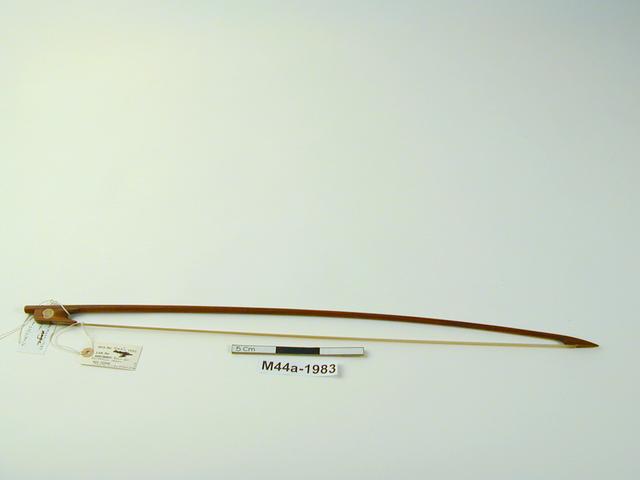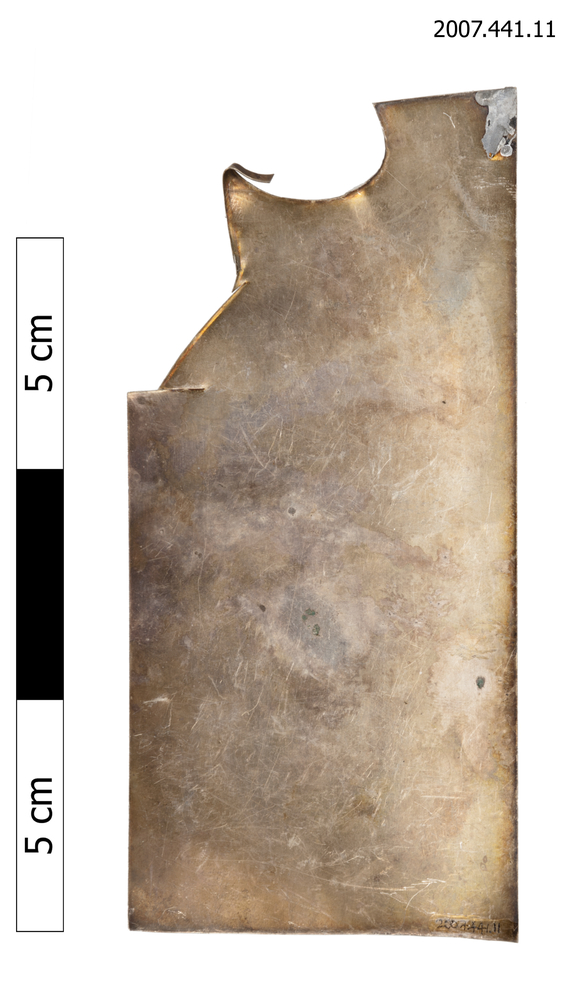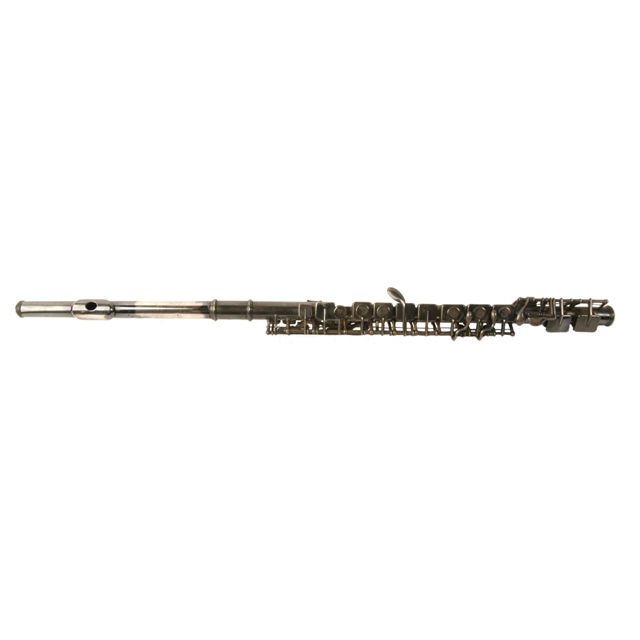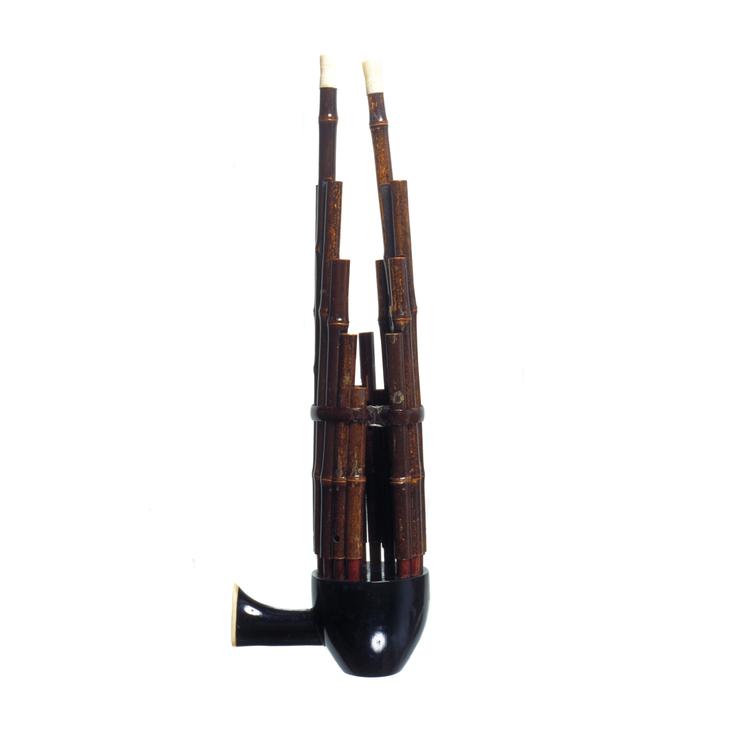
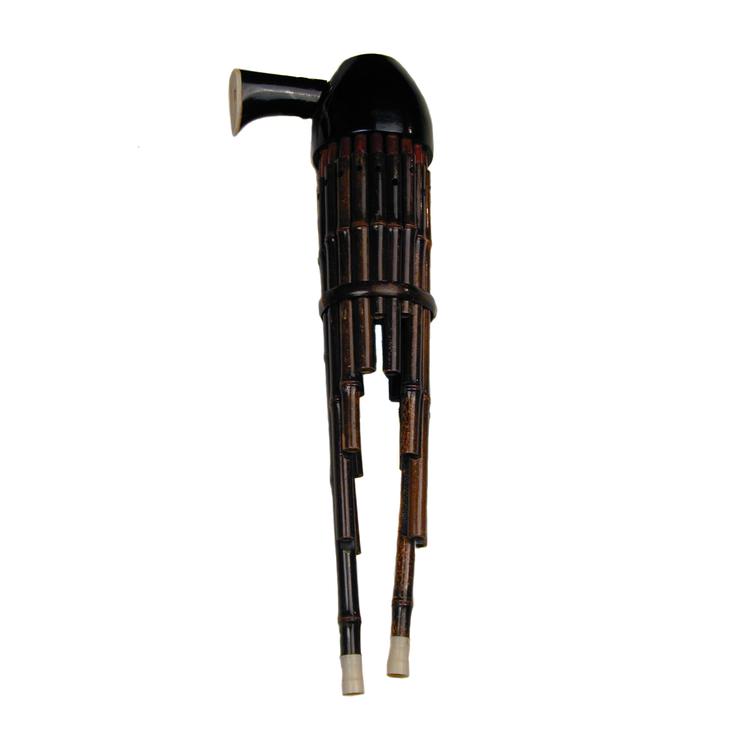
Sheng, mouth blown free reed instrument. Wooden wind chamber, painted black and with a solid flat base. Side mounted blowpipe is egg-shaped in cross-section and widens at the end to a concave ivory face. The mouth hole is an isosceles trapezium, the wide base lowermost, and is positioned centrally on the end face. Seventeen bamboo pipes arranged in a circle around the top of the wind chamber. The lower ends of the pipes are stepped to a narrower diameter to fit the holes in the wind chamber. The ends of these taper slightly and each has a flat downward-angling face cut from the outer side. These have white plastic plates attached incorporating upward pointing free reeds with square ends, each with a square tuning spot attached to the tip. Some pipes are silent, the others have a large finger hole near the bottom. The lowest nodes of each pipe are arranged in a row. A lateral bamboo strip secures the pipes and is positioned in line with the upper rims of the shortest pipes. The two longest pipes are positioned at opposite sides and each has a slightly flared ivory finial. The other pipes are arranged in two V-shaped dips at each side of the longest pipes. There is a gap in the circle of pipes corresponding to the lowest point of the dip to the player's right. The lateral bamboo band curves inwards at this point to secure the pipes at each side.



